Spain to be the world’s fourth pistachio producer in 10 years
Every year 7,000 hectares of pistachio trees are planted in Spain, the same amount as in the US, absolute crop leader. Profitability and increasing consumption are among its advantages. It is estimated that in less than 10 years, Spain will become the fourth largest producer in the world.
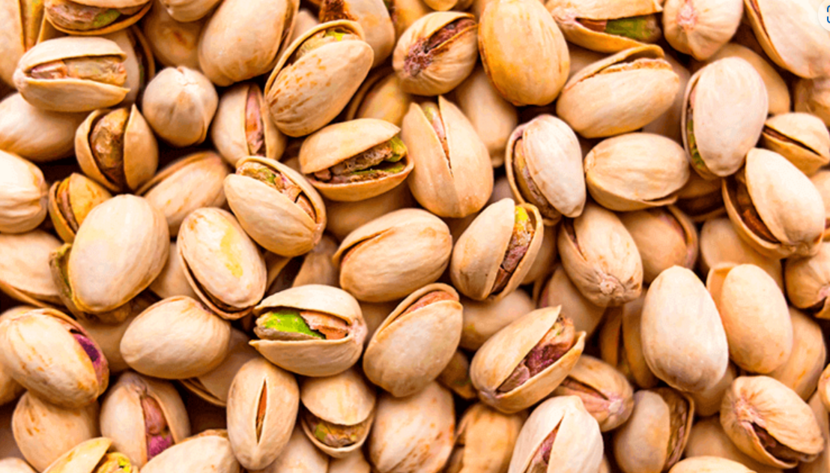
According to statistics published by the ministry of Agriculture, Fisheries and Food, pistachio is one of the crops that has grown the most in terms of surface area in Spain until 2021. Behind farmers' interest in this product is, first of all, the good forecasts in terms of consumption. In Europe alone, around 150,000 tons are consumed annually of a nut which is also considered to be very healthy.
"It is the only nut that has 20% protein containing all the essential amino acids," says Carlos Suárez, president of the European Pistachio Council (EPC).
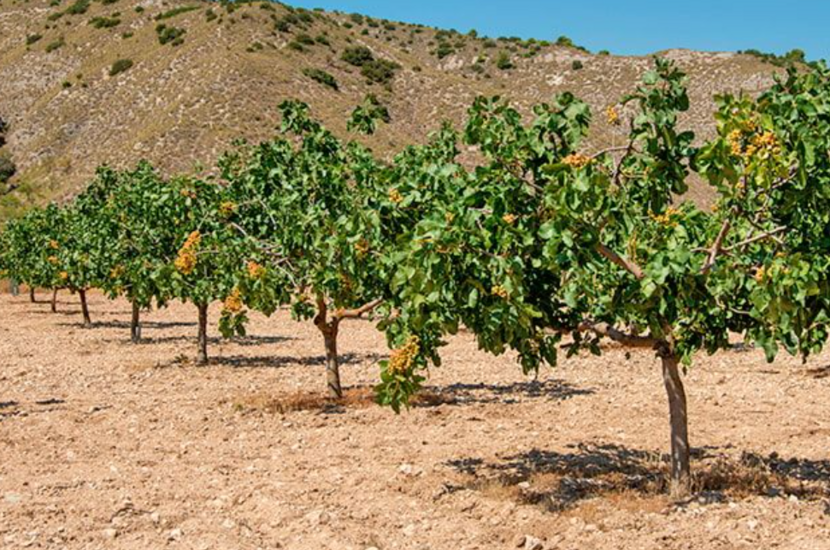
The pistachio boom in Spain
Pistachio has more advantages for those who grow it, starting with its profitability. "Demand is currently higher than supply. There are few producers: the United States (California and Arizona), Iran and Turkey, mainly, bearing in mind that Turkey only covers its domestic demand". "It is a very competitive crop without CAP subsidies. The farmer can receive on average around four or five euros per kilo, while the cost of production is around one euro per kilo", Mr. Suárez adds.
All these factors explain the pistachio boom in Spain. "It is now estimated that there are 60,000 hectares under cultivation, of which only 10% are productive; this is due to the fact that the crop does not come into production until the fifth or sixth year. Thirty percent of the crop is irrigated and the remaining 70% is rain-fed. If you take into account that rain-fed production is around 400-500 kilos per hectare per year and irrigation can increase this figure to 2,000 kilos, we calculate that in less than 10 years we will exceed 10,000 tons per year, the quantity currently produced by Syria, the fourth largest producer in the world at the moment", the EPC president points out.
He also explains that Spain is one of the few places where this crop can still be expanded. It has the surface area and the right climate. In addition, there is another fact to consider, that Iran is losing production capacity due to drought and heavy frosts.
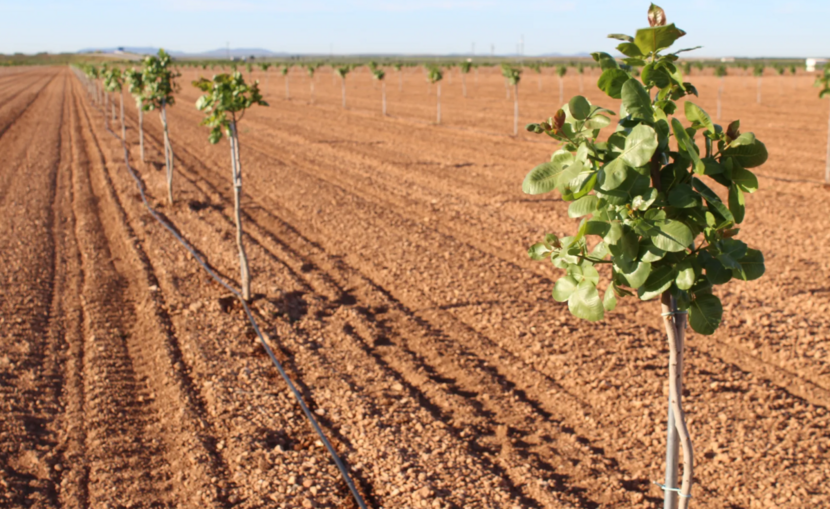
Woody crops are growing in Spain
Spain currently plants the same amount of pistachio trees as California, considering that the US is the big producer with some 600,000 tons of pistachio annually. "We estimate that here we plant between 7,000 and 10,000 hectares every year".
Pistachio is not the only woody crop that is increasing in Spain. In general, the ministry's statistics show a downward trend in the area devoted to cereals and vineyards since 2004 and an increase in woody crops such as olives, almonds and pistachios (Fig. 1).
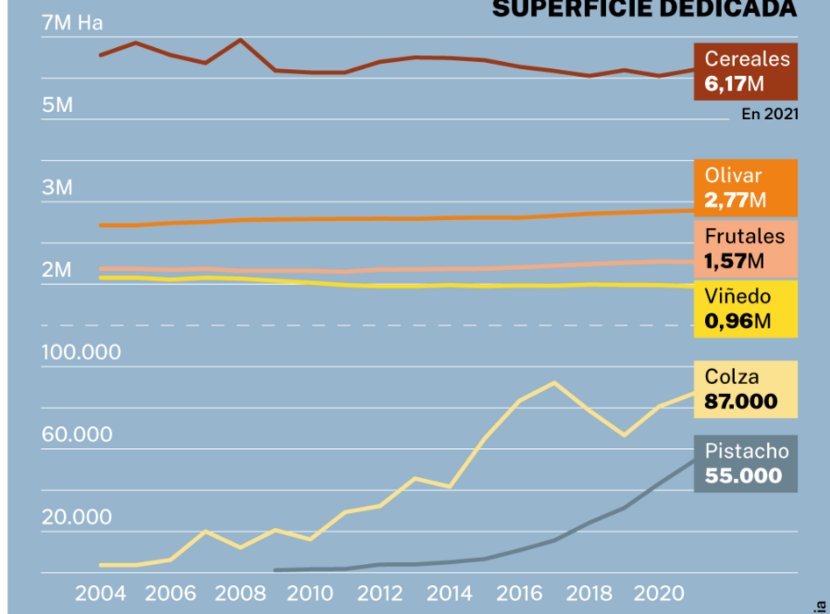
"With the severe drought of the last few months, many producers have seen a decrease in their production and an increase in their costs; they are debating whether to sow a smaller area or even to stop sowing if it is not profitable. In the long term, trees that require less water, such as pistachio and almond trees, are highly profitable crops having received large investments in recent years, having more potential," says EFE in a recent article in which it talks about how climate change could change the crop landscape by replacing maize or rice with nuts.
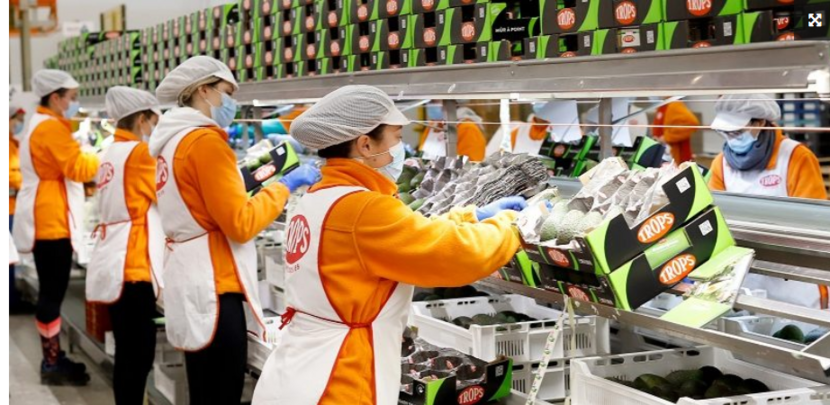
Woody crops such as almond and pistachio are growing because profitability is on the rise, while the price of cereals continues to fall". "In fruit crops, the big change in recent years has been the introduction of tropical fruits such as mango and avocado to replace traditional citrus fruits", the farmers' association Asaja points out. On the other side of the scale, vineyards are seeing a reduction in their surface area of 8,000-9,000 hectares per year. In ten years we have lost 50,000 hectares due to the drop in wine consumption worldwide", the same association states.
Climate change
Drought and climate change forecasts on the availability of water resources make it inevitable to consider whether crops in Spain will change in the face of droughts that may become more frequent. The answer is that at least in the short term they are already changing. "The reason behind the crop changes (beyond market variations) is the water concessions. We are seeing this, for example, in peaches from Lérida; there is little production and the size is smaller because there are water restrictions. Another crop that has been lost is garlic in Castilla-La Mancha. Much less rice has also been planted this year. The spokesman for another farmers' organization, UPA, qualifies: "farmers always try to adapt to the climate for their own survival, but we have to differentiate between annual crops and others such as woody crops which do not change every year because their production is long term". "When we talk about changes in crops due to climate change, we must not lose sight of the fact that nothing is that simple".
The carob bubble
Political instability, war and speculation sometimes creep into the agricultural market to produce bubbles such as the one experienced with carob in recent months. An agricultural product that did not sell for more than 0.50 cents before the pandemic and that was close to two euros per kilo just a few months ago.
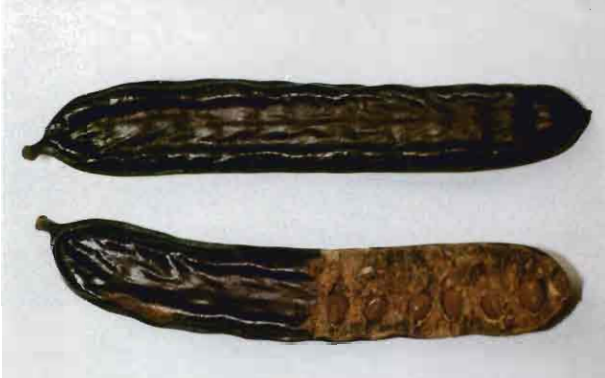
Carob can be used for the locust bean or seed, which accounts for 10% of the weight, and the pulp. From the seed, locust bean gum, a food additive better known as E-410, is extracted. The pulp has also been used in the pharmaceutical sector, for horse feed or as a substitute for cocoa.
Experts say that the reason for this price variation has been the excessive stockpiling of the raw material in the wake of the pandemic. Large multinationals started buying more than they needed. The high demand for locust bean sent prices soaring. Now the price is falling and stabilizing because demand has fallen. It seems that companies are looking for other products that can fulfil the same function but at a lower price.
Source: España será cuarto productor mundial de pistacho en menos de 10 años (larazon.es)
More Info on pistachio growing in Spain: El pistacho en España: claves de una inversión a largo plazo (plataformatierra.es)
More info on nut production in Spain: Spain: Led by pistachios, nuts continue their expansion in 2020 | Nieuwsbericht | Agroberichten Buitenland